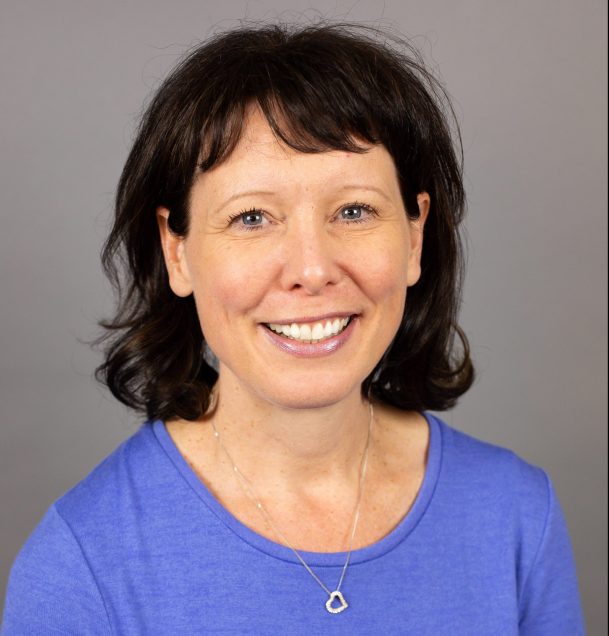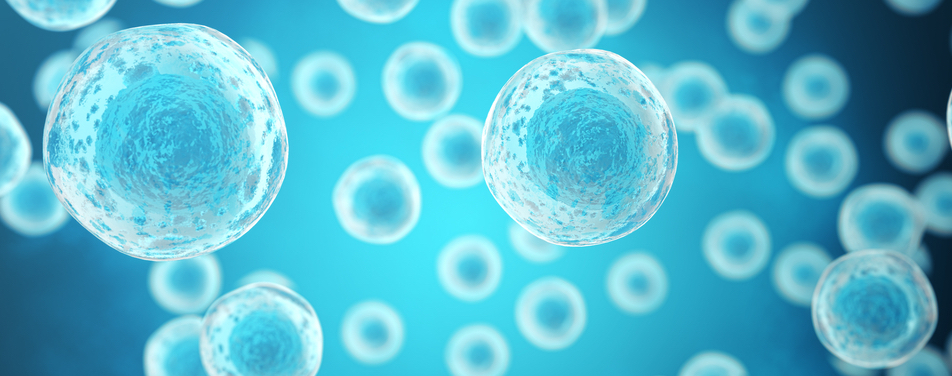 Dr. Tara Moore is the Director of the Forensic Anthropology program and one of the Lab Directors at the BUSM Laboratory of Cognitive Neurobiology.
Dr. Tara Moore is the Director of the Forensic Anthropology program and one of the Lab Directors at the BUSM Laboratory of Cognitive Neurobiology.
We had a chance to speak to her recently about the NIH grant she secured for her research, the Forensic Anthropology Program, and her advice to graduate students!
Congratulations on being funded by the NIH! Can you tell us a little more about your research?
We have a model of cortical damage which mirrors stroke. Every year almost 800,000 people in the US have a stroke, accompanied by long-term disability or death. We have been looking for 15 years at what happens in the brain after an injury. We first started working with Johnson and Johnson’s regenerative medicine team. They had an umbilical-derived stem cell therapy that they thought would be highly effective in getting the brain to repair itself after a stroke. We had some nice, positive results with their therapy. Unfortunately, they decided to change direction and no longer study this therapeutic. However, we had enough data to publish, so we did. We then teamed up with scientists at the Henry Ford Health System in Detroit, since they had also been working with Johnson and Johnson on a similar therapy.
Our collaborators started investigating the contents of the stem cells apart to determine which components were facilitating recovery. They identified extracellular vesicles from the stem cells as contributors to recovery. Extracellular vesicles are very small transport units that transfer materials back and forth between cells. We hypothesized that these extracellular vesicles might carry microRNAs or some type of protein that cause a release of growth factor that may be what facilitates recovery. We started testing the extracellular vesicle treatment after cortical injury and saw a return of function. That was really exciting and encouraging.
My graduate student started to look at the brain to see if we could figure out what exactly these vesicles were doing. She has published two papers now that provide insight into the mechanism for how these vesicles promote recovery. One showed that treatment with extracellular vesicles significantly reduced the inflammation caused by cortical injury. The other showed repair of myelin that had been damaged by the injury. We’re continuing this work and just received another year of funding.
The other topic we study in our lab is aging. We’ve shown that in the aging brain (and in the absence of dementia), the slowdown in cognitive capacity is likely caused by inflammation and myelin damage. Now we had this evidence that these extracellular vesicles could reduce inflammation and possibly facilitate myelin repair. we submitted a grant to now determine if extracellular vesicles could reverse age related changes in the brain. Based on what we saw in the case of injury, we proposed this treatment could also help reverse age-related cognitive decline which may have applications in neurodegenerative diseases like Alzheimer’s.
Research is obviously a huge part of your role here at BU. Another part of your role is directing the Forensic Anthropology program in GMS. What’s your vision for the training that your students receive?
The largest component of their training is osteology. They know the bones so well. The field of forensic anthropology really grew out of what we call skeletal anthropology. Those were anthropologists who knew the skeleton to the most minute detail. They would work on archaeological sites and when skeletons were found during the dig, the anthropologists were able to put them back together into their anatomically correct position. They could also give you certain estimates. If they had a femur, they could estimate how tall somebody was. If they had a pelvis, they could tell you whether it was male or female. If they had a skull, they could suggest the likely ancestry of the person.
By the late 1970s, anthropologists were being brought into law enforcement cases where skeletonized remains were found. The anthropologist could give the police a biological profile of the deceased. The police could then take that to their missing person database and narrow down the possible identities. This grew into being its own sub-field within anthropology. That’s really what we’re teaching our students: the osteology, how to take all those measurements from a skeleton, and how to make those estimates.
Could you speak to the benefits of being a part of GMS and BU School of Medicine?
There are huge advantages to being housed in a medical school on a medical campus. For one, we are in the department of Anatomy and Neurobiology. Our students take soft tissue anatomy with me, and that’s cadaver based. They also do a thesis, and some of them use CT scans for their thesis project. We work very closely with Radiology in the hospital, and they have been fantastic with our students. Just being in a medical community, the students get more exposure to that than they would in a traditional anthropology program. Then of course, GMS is just so fabulous and so supportive. I think the students really benefit from that as well.
Finally, do you have any advice for graduate students who might be considering a career that’s more research focused?
Find a research subject that you’re interested in and passionate about, because it is a very long road. If you’re not really that interested in your topic, it makes it an even longer road. I was very fortunate; the lab I joined to do my PhD is the lab I’m still in. I loved what we were doing then, and I still do now. I know not everyone is that fortunate, but I really enjoyed the research and have all throughout. I think that’s important. And then, persevere. I graduated with my PhD in 2000. I’ve had small grants and industry grants along the way, but my current grant from the NIH is the first big one. It’s been probably 12 years of working toward getting this one. And again, I was very fortunate to be in a big lab that was well-funded. I sort of always had that cushion around me that’s allowed me to keep going. So that’s my best advice: find something you really enjoy.
